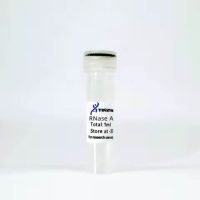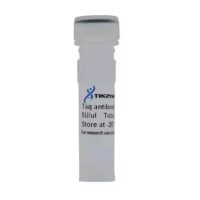
AacCas12b (C2c1)
2023-07-17
Glucose Oxidase
2023-07-17Cat: GDH0601
Recombinant grade, molecular biology grade, derived from microorganisms
Description
| CAS No. | 9035-82-9 |
| EC | 1.1.5.9 |
| Molecular mass | Not less than 65kDa |
| pI | 5.6 |
| pH range | 5-9 |
| Storage temperature | It is recommended to keep it sealed, and the storage temperature should not be higher than -20°C. |
| Type | Freeze-dried powder |
| Temperature Distribution | When the maximum activity value is at 70°C, 37-80°C is recommended |
| Enzyme activity | >300U/mg lyophilized powder |
Unit Definition
At pH 6.5, 37°C, the amount of enzyme that converts one micromole of 2,6-dichlorophenol indigo (DCPIP) per minute is an enzyme activity unit (U). For the enzyme activity value of each batch of products, see the corresponding quality inspection Report.
Purity and Quality
| Exterior | Yellow powder |
| Electrophoretic purity | >95% (SDS-PAGE) |
| Enzyme activity | >300U/mg lyophilized powder |
Feature
This product is derived from microorganisms, catalyzes the dehydrogenation of glucose to generate gluconic acid, and has the advantages of high specific activity and high yield. The coenzyme that this product relies on is FAD, which has better stability and substrate specificity than other coenzymes such as NAD and PQQ.
Application
Glucose dehydrogenase (GDH) is a kind of oxidoreductase that catalyzes the oxidation of glucose to gluconolactone. It has a wide range of applications in the fields of blood glucose detection, biofuel cells, implantable cardiac pacemakers, and industrial glucose content monitoring.
Advantages of recombinant GDH
Recombinant GDH improves specific activity, increases yield, expands a larger pH/temperature range, and has better activity. Advanced protein engineering technology and 28,000-liter fermentation platform effectively reduce the unit cost and provide more cost-effective glucose dehydrogenase for biomedical research and development and production.
Note
Please use the specified buffer solution configuration, it is recommended to transport below 4°C, and it is recommended to store at -20°C
Stability
Stored in a dry environment below -20°C after receipt, the validity period is at least 1 year
It is recommended to keep it sealed, and the storage temperature should not be higher than -20°C.
Dilution Buffer
l0mM Tris (pH8.0), 5mM NaCl
Storage Buffer
l0mM Tris (pH8.0), 5mM NaCl
Notice and Disclaimer
For your safety and health, please wear a lab coat, protective gloves and goggles when using it.
This product is for research and development use only and is not intended for pharmaceutical, household or other use.




